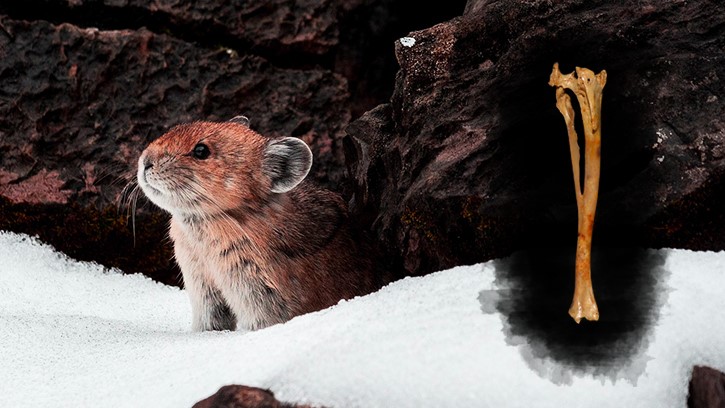An infected knee: The oldest pathological record reported in lagomorphs

Studying these palaeopathologies allows to advance in the knowledge of extinct species, giving new insights about their immunology, physiology, ethology or relationships with the ecosystems. Moreover, their descriptions also provide new opportunities to explore the history and evolution of diseases in our planet.
In a study recently published in the journal Comptes Rendus Palevol, researchers of the Universitat Autònoma de Barcelona have collaborated with Spanish and European researchers describing the oldest palaeopathology reported in a lagomorph species (mammal group including rabbits, hares and pikas), being the first one documented in a continental species. The abnormality is located in the upper (proximal) part of a tibiofibula (bone homologous to the human shinbone and calf bone). This bone has been found at Goldberg site (~ 14 million years ago, middle Miocene; Bavaria, Germany) and is housed in the mammal collection of the Bayerische Staatssammlung für Paläontologie und Geologie (Munich, Germany). In order to provide a detailed diagnosis of the pathology, the researchers performed an X-ray microtomography looking for the presence of microstructural changes in the bone. The resulting images allowed to observe both destruction and growth of new bone tissue, processes associated to two different pathological conditions: infections and neoplasias.
Paleopathological tibiofibula of ochotonid (1966XXXIV 3340) housed at the mammalian collection of the Bayerische Staatssammlung für Paläontologie und Geologie. A. Complete bone. B. Paleopathological details. Scale= 1 cm. (Blanca Moncunill-Solé, CC BY-NC-ND 4.0).
However, the shape, emplacement and structure, as well as information about the incidence of such diseases in living rabbits, allow the researchers to conclude that the lagomorph bore an infection in the knee joint (septic arthritis). The origin of the pathology may be in a violent mechanism, such as a bite. Bites may be caused by other individuals of the same species or by predators. The extensive bone destruction points to a severe impact of the infection in the individual, perhaps endangering some vital activities as feeding or locomotion. Furthermore, in the event of haematogenous spread to other parts of the body, it might have caused a systemic collapse. Taking in mind the pathology and the fossiliferous context, the researchers concluded that the death of the individual was consequence of a predator, since the Goldberg site formed after the accumulation of pellets (regurgitated balls of non-digested materials) of birds of prey.
1) Dipartimento di Scienze, Università Roma Tre
2) Centro de Investigacións Científicas Avanzadas (CICA), Universidade da Coruña
3) Unitat d’Antropologia Biològica, Departament de Biologia Animal, Biologia Vegetal i Ecologia (BABVE), Universitat Autònoma de Barcelona
4) Bayerische Staatssammlung für Paläontologie und Geologie, München
References
Moncunill-Solé, B., Isidro, A., Blanco, A., Angelone, C., Rössner, G.E., Jordana, X. The most ancient evidence of a diseased lagomorph: Infectious paleopathology in a tibiofibular bone (Middle Miocene, Germany). Comptes Rendus Palevol, 2019, 18 (8), 1011-1023. DOI: 10.1016/j.crpv.2019.10.007


